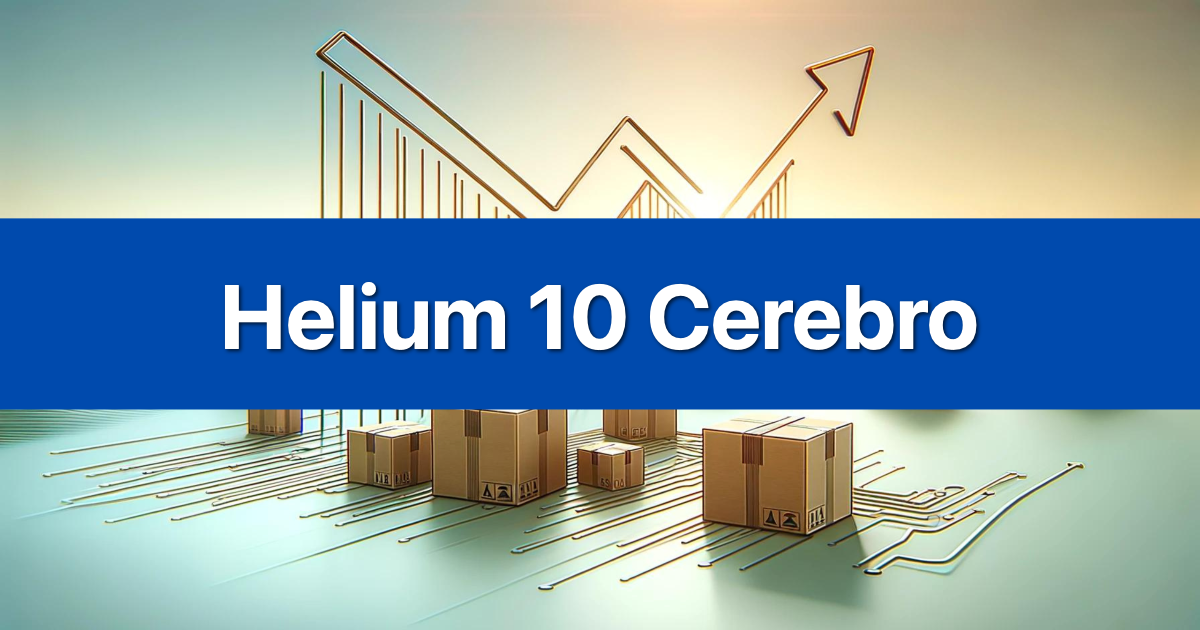According to Helium 10, the platform delivers 89% accuracy for sales estimates and 93% accuracy for keyword search volume ordering.
These figures – based on Helium 10’s internal benchmarks – suggest stronger reliability than competitors like Jungle Scout, which reportedly shows 60% accuracy for sales and 42% for keyword rankings.
While no Amazon tool hits 100% accuracy, Helium 10’s data quality is strong enough to make confident business decisions about product selection, keyword targeting, and market analysis.
The Short Answer: Helium 10’s Accuracy Level
Based on comprehensive case studies analyzing nearly 30,000 Amazon products, Helium 10 consistently outperforms other major tools in data accuracy. Here’s what the numbers show:
- Sales Volume Estimates: 89.59% accuracy rate
- Keyword Search Volume: 93.5% accuracy for search ordering
- Coverage: Provides estimates for 92% of tested products (vs. 41% for competitors)
These accuracy rates mean you can trust Helium 10’s data for critical decisions like product research, keyword prioritization, and competitive analysis. The tool’s reliability has earned it over 1 million active users on the Chrome extension alone.
How Helium 10 Gathers Its Data
Understanding Helium 10’s data collection methods helps explain why it’s more accurate than alternatives. The platform combines multiple data sources and sophisticated algorithms to generate reliable estimates.
Key Data Sources
Helium 10 originally accessed Amazon’s internal search volume API starting in 2018, building a massive historical database before Amazon restricted access. Today, the platform uses:
- Historical Amazon API data: Years of direct search volume information
- Best Seller Rank tracking: Real-time BSR monitoring across categories
- Review velocity analysis: Product review patterns indicate sales trends
- Price change monitoring: Pricing fluctuations correlate with demand
The platform also leverages normalized search data, which counts unique user sessions rather than individual clicks. This approach mirrors Amazon Brand Analytics methodology and provides cleaner insights into actual customer behavior.
Understanding Data Update Frequency
Helium 10 refreshes its core datasets at different intervals based on data type and importance:
- Sales estimates: Updated weekly using the most recent BSR data
- Search volume: Monthly updates with rolling 30-day averages
- Keyword rankings: Daily tracking for monitored products
- Product discovery: Real-time scanning for new ASINs and categories
This staggered update schedule ensures you’re working with fresh data while maintaining system performance. The weekly sales updates are particularly valuable since they capture rapid market changes and seasonal fluctuations.
Accuracy Deep Dive: Sales & Keyword Estimates
Let’s examine exactly how accurate Helium 10’s core metrics are and what factors influence data reliability.
Sales Volume Accuracy: What to Expect?
Independent testing of 29,906 Amazon products across 32 categories revealed Helium 10’s sales estimates hit 89% accuracy. Here’s what this means practically:
If Helium 10 estimates a product sells 100 units monthly, the actual sales typically range between 90-110 units. Compare this to Jungle Scout’s 60% accuracy, where estimates could be off by 40+ units in either direction.
The accuracy varies by product category and sales volume. Higher-volume products (1,000+ monthly sales) show tighter accuracy ranges, while lower-volume items may have wider variance. Products in established categories like Home & Kitchen demonstrate better accuracy than newer niches.
Helium 10’s sales estimates also include child ASIN level data, meaning you get individual estimates for different colors, sizes, or variations. This granular approach provides more actionable insights than parent-level estimates alone.
Keyword Search Volume: How Reliable Is It?
For keyword research, Helium 10 achieved 93% accuracy when comparing search volume ordering against Amazon Brand Analytics data. This metric matters more than raw search numbers because keyword prioritization drives your optimization decisions.
When Helium 10 shows “coffee maker” has higher search volume than “espresso machine,” that ranking is correct 93.5% of the time. This reliability helps you prioritize which keywords to target in listings and PPC campaigns.
The platform uses normalized search data, counting unique user sessions rather than individual page clicks. This approach aligns with Amazon’s own Brand Analytics methodology and provides cleaner insights into genuine customer search behavior.
Why Data Can Vary?
Several factors influence the accuracy of any Amazon data tool, including Helium 10:
- Seasonal fluctuations can throw off estimates during peak shopping periods. A product that normally sells 50 units monthly might jump to 200 during Q4, making historical data less predictive.
- Category maturity affects accuracy levels. Established categories with consistent sales patterns show better estimate reliability than emerging niches with volatile demand.
- Product lifecycle stage impacts data quality. New products lack historical patterns, while discontinued items may show inflated estimates based on past performance.
- Amazon algorithm changes can shift search behavior and ranking factors, temporarily affecting keyword volume estimates until the system adapts.
Despite these variables, Helium 10’s accuracy remains consistently higher than alternatives. The platform’s machine learning algorithms continuously adjust for these factors, maintaining reliable estimates across different market conditions.
Using Helium 10 Data: Tips for Best Results
Maximize Helium 10’s accuracy by following these data interpretation best practices:
- Focus on relative comparisons rather than absolute numbers. If Product A shows 200 monthly sales and Product B shows 100, Product A likely outsells Product B by roughly 2:1, even if the exact numbers vary.
- Cross-reference multiple metrics for validation. Combine sales estimates with review velocity, price trends, and keyword rankings to build a complete picture of product performance.
- Use trending data over snapshots. Look at 3-6 month patterns rather than single data points. Helium 10’s Market Tracker tool excels at showing these longer-term trends.
- Account for seasonality in your analysis. Q4 estimates may be 2-3x higher than typical months for gift-related products. Factor these patterns into your planning.
- Validate with Amazon’s native tools when possible. Compare Helium 10 estimates against Brand Analytics data or Search Query Performance for products you have access to.
- Consider the competitive landscape. High-accuracy estimates matter most in competitive niches where small differences impact profitability. For blue ocean opportunities, broader accuracy ranges may be acceptable.
Want to dive deeper into data validation? Our Helium 10 vs Keepa comparison shows how different tools complement each other for comprehensive market analysis.
For advanced users, explore Helium 10’s API capabilities to integrate accurate data directly into your existing workflows and business intelligence systems.
Outro
Helium 10’s 89% sales accuracy and 93% keyword ordering accuracy make it the most reliable Amazon data tool available. While perfect accuracy remains impossible due to Amazon’s complexity, these levels provide the confidence needed for smart business decisions.
The platform’s superior accuracy stems from years of data collection, sophisticated algorithms, and continuous refinement. Whether you’re researching products, optimizing listings, or planning PPC campaigns, Helium 10’s data quality gives you a competitive advantage.
Ready to experience the most accurate Amazon data available? Get your Helium 10 subscription and see how reliable estimates transform your Amazon strategy.




